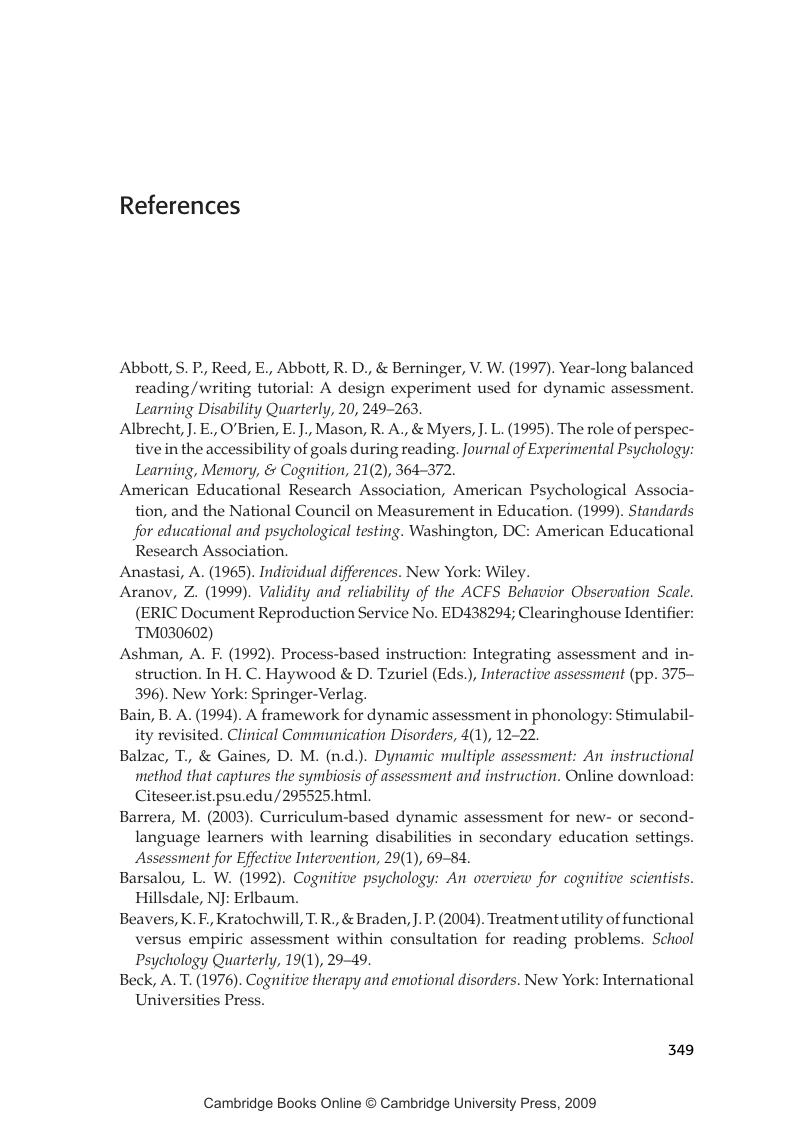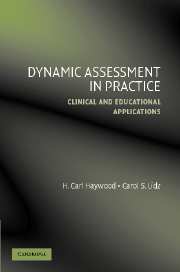Book contents
- Frontmatter
- Contents
- Preface
- Foreword, by Kenneth A. Dodge
- Foreword, by Thomas Oakland
- PART ONE THEORY AND PRINCIPLES
- PART TWO APPLICATIONS
- APPENDIX A TESTS REFERRED TO IN THE TEXT THAT DO NOT BELONG TO THE AUTHORS
- APPENDIX B SOURCES OF DYNAMIC ASSESSMENT MATERIALS
- References
- Author Index
- Subject Index
- Tests and Testing Materials Index
- References
References
Published online by Cambridge University Press: 04 December 2009
- Frontmatter
- Contents
- Preface
- Foreword, by Kenneth A. Dodge
- Foreword, by Thomas Oakland
- PART ONE THEORY AND PRINCIPLES
- PART TWO APPLICATIONS
- APPENDIX A TESTS REFERRED TO IN THE TEXT THAT DO NOT BELONG TO THE AUTHORS
- APPENDIX B SOURCES OF DYNAMIC ASSESSMENT MATERIALS
- References
- Author Index
- Subject Index
- Tests and Testing Materials Index
- References
Summary

- Type
- Chapter
- Information
- Dynamic Assessment in PracticeClinical and Educational Applications, pp. 349 - 372Publisher: Cambridge University PressPrint publication year: 2006



